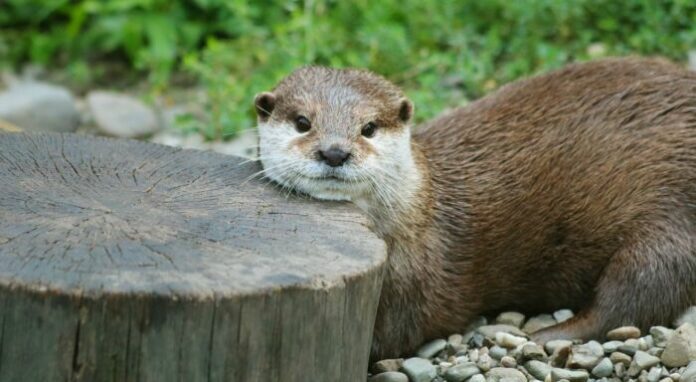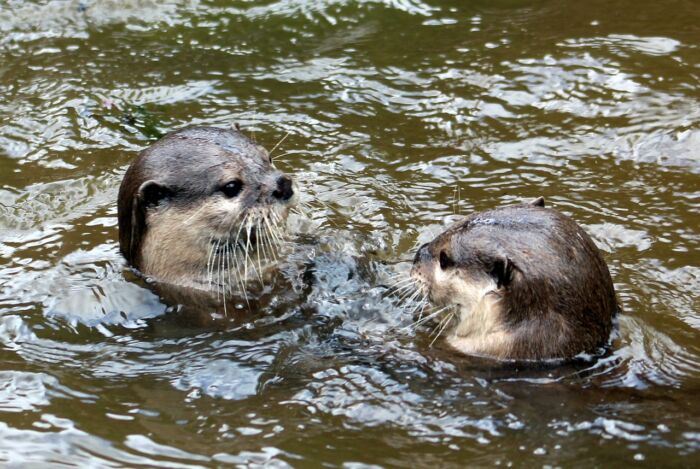
The Otter Day is celebrated on 29 May, World Otter Day (Lutra lutra) dedicated to one of the rarest and most endangered species of European fauna and to celebrate it, the definitive data from the latest research carried out in Italy thanks to the Project have been released Lontra, promoted and financed by WWF Italy in collaboration with the University of Molise in the person of Anna Loy, one of the world’s leading experts on the species, with the patronage of the IUCN – Species Survival Commission and Otter Specialist Group, and of the Lontra Italia Group .
The presentation event, organised by WWF together with the University of Molise and ISPRA, took place at the Bioparco in Rome and involved an audience of experts in the sector, institutions and enthusiasts.
Good news continues for this species, which in recent years has been showing clear signs of recovery in all European countries: after more than 40 years since the last national monitoring promoted by WWF Italy of the Italian otter population, new data collected in 12 Italian regions (Lazio, Tuscany, Umbria, Marche, Emilia-Romagna, Liguria, Piedmont, Lombardy, Valle d’Aosta, Veneto, Trentino-Alto Adige and Friuli-Venezia Giulia) in areas of possible expansion from neighbouring areas of known presence of the species confirm the return of the species to the Italian Alps, in regions from which it had disappeared for decades such as Friuli-Venezia Giulia, Veneto, Trentino-Alto Adige, Lombardy and Liguria, while for central Italy it has reappeared in Latium, Marche and upper Tuscany. Today, therefore, we have new nuclei in addition to the historical southern population, which has remained viable over time, located in Campania and Basilicata as well as Puglia, Calabria, Abruzzo and Molise. The otter population in Italy is estimated at 900-1,200 individuals, a number still well below the minimum viable limit of 4,000-5,000 individuals to consider it out of danger.
The destruction of river and riparian environments is one of the main reasons that has brought the species to the brink of extinction. Unfortunately, rivers are still among the most threatened environments on the planet, with over 40% of Italian rivers still not in good ecological status according to the parameters of the European Water Directive. Apart from Friuli, where the census has confirmed a wide and stable distribution, the new reports refer to small isolated nuclei that are at high risk of extinction, as demonstrated by the small population discovered in the Roja in 2019 and wiped out by the tremendous flood that hit this watercourse on the border with France in 2020. These cores will need to be constantly monitored and protected, including with measures to encourage their rapid expansion into neighbouring basins.
At the end of the presentation, a new proposal was also launched to update the current National Plan (PACLO), which unfortunately is still not being implemented today: among the actions suggested in the working group’s proposal was to add the otter to the list of protected species in 40 new Natura 2000 Sites where the species has been found.
On the trail of the Otter
In addition to the 12 regional contact persons who have always been involved in field research, volunteers and operators from other organisations, such as the Friuli-Venezia Giulia Forestry Corps, park rangers from protected areas and university students, contributed to the research. The entire team, made up of 40 experts from various bodies, universities and associations, combed hundreds of kilometres along 35 of the country’s river basins, including the Po, Tiber, Tagliamento, Adige, Isonzo, Magra, Arno, Ombrone, Tronto and Liri-Garigliano, for about 18 months of investigations, in search of traces of presence and in particular of the so-called spraints (droppings), characteristic of the species, and by monitoring photo-trap images, such as those revealing a family group in the Isonzo basin, the first certain evidence of reproduction in this area.

Factors that have favoured the otter’s ‘return north’ include, first and foremost, the encroachment of specimens from Austria, Slovenia and France, as rivers are formidable natural ecological corridors if their natural state is maintained. On the other hand, the positive signs from Latium and Marche suggest a natural expansion of otters from the neighbouring basins in Campania and Abruzzo occupied by this species. However, the single confirmed case in upper Tuscany and the discovery of a deceased specimen in the Po delta in Veneto remain to be understood. So far, no traces have been found in Piedmont (except for a nucleus reintroduced with specimens crossed with an Asian subspecies in the Ticino Regional Park), Umbria and Emilia-Romagna, although in the latter case there have been a few reports in the verification phase. One of the hypotheses that is being monitored is the possibility that the otter also uses the sea to move from one basin to another in the peninsular area: there are, in fact, increasingly frequent reports of specimens stopping in ports, swimming near beaches or being sighted near islands. This is another reason why an update of the National Action Plan will be necessary to update the actions required to encourage the dispersion and colonisation of new areas by safeguarding the riparian areas of the lower reaches of rivers and coastal areas between mouths.
An important role in this return is also given by the presence of protected areas created in recent years, including many WWF Oases: the challenge today is to encourage the connection between the viable population of the south and that of the centre-north. There are still many threats: road crossings that bring otters, at least 70 in recent years hit by cars, together with many other protected mammals such as bears and wolves, the fragmentation and pollution of rivers and the degradation of riparian habitats. The protection of the species that symbolise our biodiversity is among the objectives of WWF’s Our Nature campaign.
In the 1980s it was the WWF that first sounded the alarm about the condition of the species: with the Italian Otter Group, it coordinated the first monitoring, from which it emerged that only 6% of the 1300 sites monitored were inhabited. This led to the creation of river oases in strategic areas such as Persano in Campania, Policoro in Basilicata and support for larger conservation projects such as the Cilento-Vallo di Diano and Monti Alburni National Park, and a centre dedicated to the species at Penne in Abruzzo.
It is now a question of facilitating the spontaneous return of the species by creating the right conditions for its establishment in newly and future expansion areas.



































